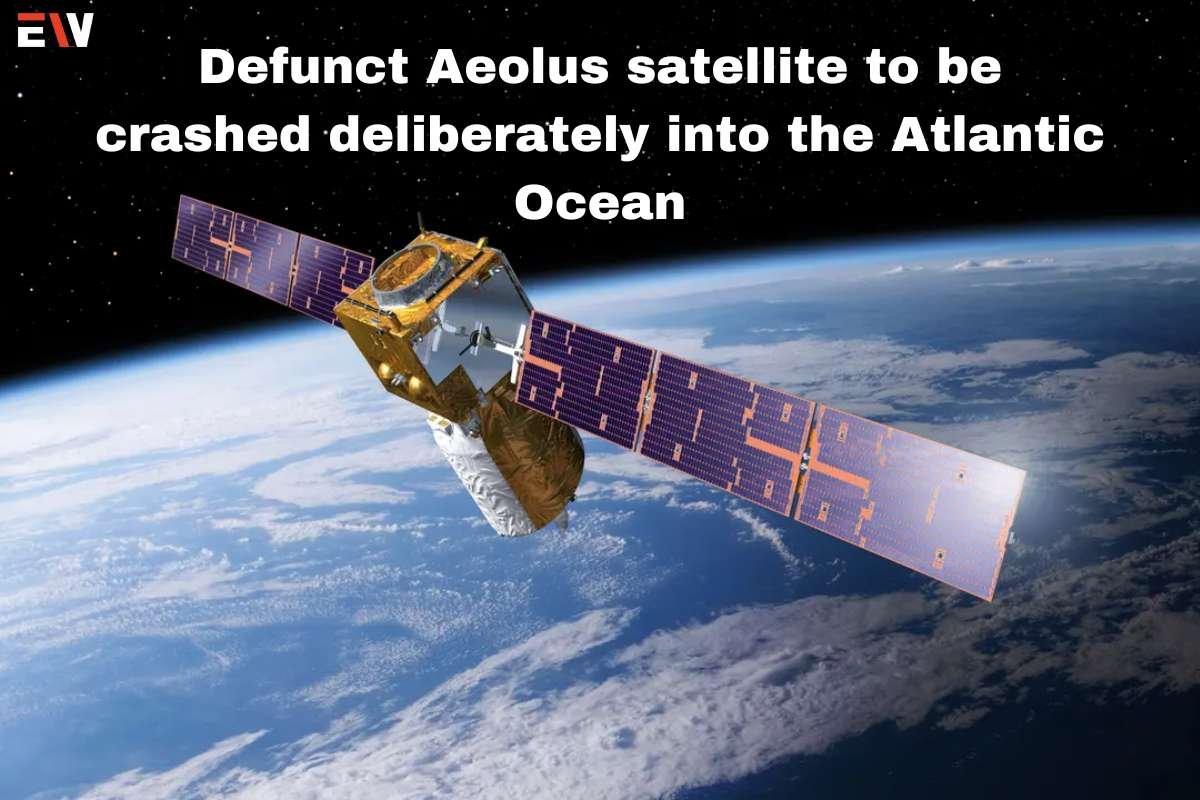On Friday, a defunct European satellite is set to make an unprecedented return to Earth as mission controllers guide the spacecraft into a fiery dive over the Atlantic Ocean.
The Aeolus satellite is weather-monitoring satellite was not initially designed for a controlled re-entry at the end of its mission. However, the European Space Agency (ESA) has chosen to utilize the remaining fuel onboard to direct the probe to a watery end.
Demonstrate best practices
This marks the first time a space agency has attempted such a re-entry for one of its non-operational satellites. The primary objectives are to further minimize the already extremely low risk of debris impacting people or property and to gather valuable data for future satellite re-entries. The ESA also aims to demonstrate best practices in hopes that other spacefaring nations and organizations will follow suit.
While most of the satellite, weighing 1,360kg at launch, is expected to burn up as it enters the atmosphere, approximately 20% of its mass may survive, similar to other re-entering probes. Every year, around one hundred tonnes of space debris, including spent satellites, rocket bodies, and other components, descend into Earth’s atmosphere. With the Aeolus satellite, the ESA is directing the debris to fall into a remote stretch of the Atlantic Ocean, where it will sink into the deep waters, ensuring minimal impact on populated areas.
Holger Krag, head of the space safety program at ESA, explained that the spacecraft was not originally designed for a fully controlled re-entry, such as precisely targeting a specific point. Controlled re-entries have typically been executed by rocket stages, spaceships, or cargo ships, but not by satellites.
To achieve the best possible control over the re-entry process, the ESA is utilizing the spacecraft’s onboard propulsion system. This approach aims to significantly reduce the risk of any debris landing on land, bringing it down to a third of the risk associated with a natural re-entry where no intervention is taken. In essence, the ESA’s actions are meant to minimize the chances of satellite fragments causing harm or damage upon re-entering the Earth’s atmosphere.
Aeolus’ Epic Fall: European Aeolus satellite being made to crash intentionally on Earth | WION
First spacecraft to observe Earth’s wind currents from space
Launched in August 2018, the Aeolus satellite holds the distinction of being the first spacecraft to observe Earth’s wind currents from space. Equipped with a sophisticated laser instrument called a Doppler wind lidar, the probe has been instrumental in enhancing weather forecasts and climate models.
Operating from a relatively low altitude of 200 miles (320km), the Aeolus satellite is positioned closer to Earth compared to the International Space Station, which typically orbits 50 miles higher. Unlike the common practice of allowing satellites to naturally spiral down and burn up uncontrollably once their missions conclude, the European Space Agency (ESA) has devised a unique plan to utilize the satellite’s remaining fuel to facilitate a safer descent.
To accomplish this controlled re-entry, ESA scientists are issuing meticulously timed commands to the probe. The process involves rotating the satellite 180 degrees and then activating its thrusters to reduce its speed. On Monday, the first braking maneuver was successfully executed, during which Aeolus satellite engaged its thrusters for almost 40 minutes, resulting in a decrease in its altitude to 155 miles.
Curious to learn more? Explore our article on: Enterprise Wired










